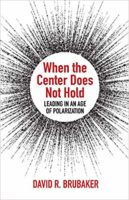
For perhaps the first time in American history, more congregations are disappearing every year than are being born. But even in decline, some are finding new ways to serve people and communities.
Lifeway Research found that 4,500 churches closed their doors in 2019, while only about 3,000 congregations were started. And over the last two decades, median worship attendance in the U.S. dropped by more than half—from 137 to 65. Religious participation is declining, and as a result more congregations are dying.
Stages of Grief
But is it possible to die well? Elisabeth Kübler-Ross’s research on death and dying proposed five stages in the grief and dying process. While the stages are not linear and not everyone experiences all five stages, when applied to a congregation in decline the stages are broadly descriptive:
- Denial. A congregation in denial tends to dismiss declining attendance as a temporary phenomenon and to pursue various “quick fix” solutions. Such congregations believe that “if we just had a younger pastor” or “if we had a more attractive building” then trends could be reversed and growth could resume.
- Anger. For many congregations, the exit from denial is accompanied by anger. The anger can be multi-faceted but often is directed at the pastor or key lay leaders: “I knew that if she preached on ‘welcoming the stranger’ we would lose people!” “The problem with young people today is that they have no loyalty!” Anger may be both unfair and misdirected, but it is a sign of moving beyond denial.
- Bargaining. Once denial is broken and anger expressed, bargaining often sets in: “Maybe if we start livestreaming our services, we can rebuild attendance!” Or “If we just hire a youth minister, we’ll be able to attract more young people!” Such ideas may be appropriate and constructive, but in and of themselves are unlikely to change the congregation’s trajectory.
- Depression. Having tried several steps to stem the decline, a congregation in decline may experience corporate depression. The glory days of the past (usually in the 1950s, 1960s, and 1970s) are remembered ruefully; sadness and grief are palpable in nearly every gathering. This is a normal part of the process and cannot be dismissed or rushed.
- Acceptance. As a congregation emerges from the understandable stage of depression, it begins to accept that things will never be the same. New ideas start to bubble up: “What if we offered to merge with the congregation across town?” “I heard that another congregation gifted its building to a nonprofit to be used for affordable housing!” Life after death becomes imaginable, even for those who were most grieved by the congregation’s possible demise.
There is indeed life after death for those congregations that have learned to die well. Here are three examples of such rebirth:
The Two Become One
As a broad generalization, predominantly white congregations in the U.S. are in decline, while BIPOC and immigrant congregations are growing. Across this difference, a few congregations have found new life by joining hands. In Oakland, California for example, a predominately African-American congregation known as The Way merged with a predominantly white congregation known as Oakland Communion to form a vibrant multi-ethnic congregation called Tapestry Oakland. This was not a rushed marriage but a two-year courtship, as “the congregations began worshiping together every eight weeks, then every four weeks and on holidays.”
A Repurposed Building
Hundreds of old churches throughout Europe have been repurposed into new functions—including as art studios. One recent example is Bishop’s Castle Methodist Church in Shropshire, England, northwest of London. Its building was almost torn down in 2018 but was saved because of its historic significance. Instead of demolishing the building, the Church Council sold it to a local artists, who are currently remodeling it to serve as an art gallery and studio.
Affordable Housing “in God’s Backyard”
The Arlington (Virginia) Presbyterian Church declined from more than 1,000 members in the 1950s to about 60 in 2016, and decided to sell its sanctuary to the Arlington Partnership for Affordable Housing. Bloomberg reports that “The [nonprofit] developer razed the church and built a seven-story, 173-unit affordable complex in its place, allowing the congregation to escape increasing costs while fulfilling an obligation to care for the poor.” The congregation continues to meet, but in leased space on the ground floor of the affordable housing complex.
Congregational decline may be endemic in much of Europe, North America, and Australia, but the process of death and dying is also seeding new life. Whether through mergers, repurposing of old buildings, or other transformations, congregations are finding completely new ways to serve their communities.
In the Christian tradition, and in elements of Judaism and Islam, resurrection is promised following death. Congregations, like individuals, may resist the death and dying process by any means possible. But once they embrace it, they might be amazed by the new life that arises.
David Brubaker has consulted with organizations and congregations in the U.S. and a dozen other countries on organizational development and conflict transformation. He is the author of Promise and Peril, on managing change and conflict in congregations, and When the Center Does Not Hold, on leading in an age of polarization. David recently retired from his role as Dean of the School of Social Sciences and Professions at Eastern Mennonite University, and is now a Professor Emeritus of Organizational Studies.


